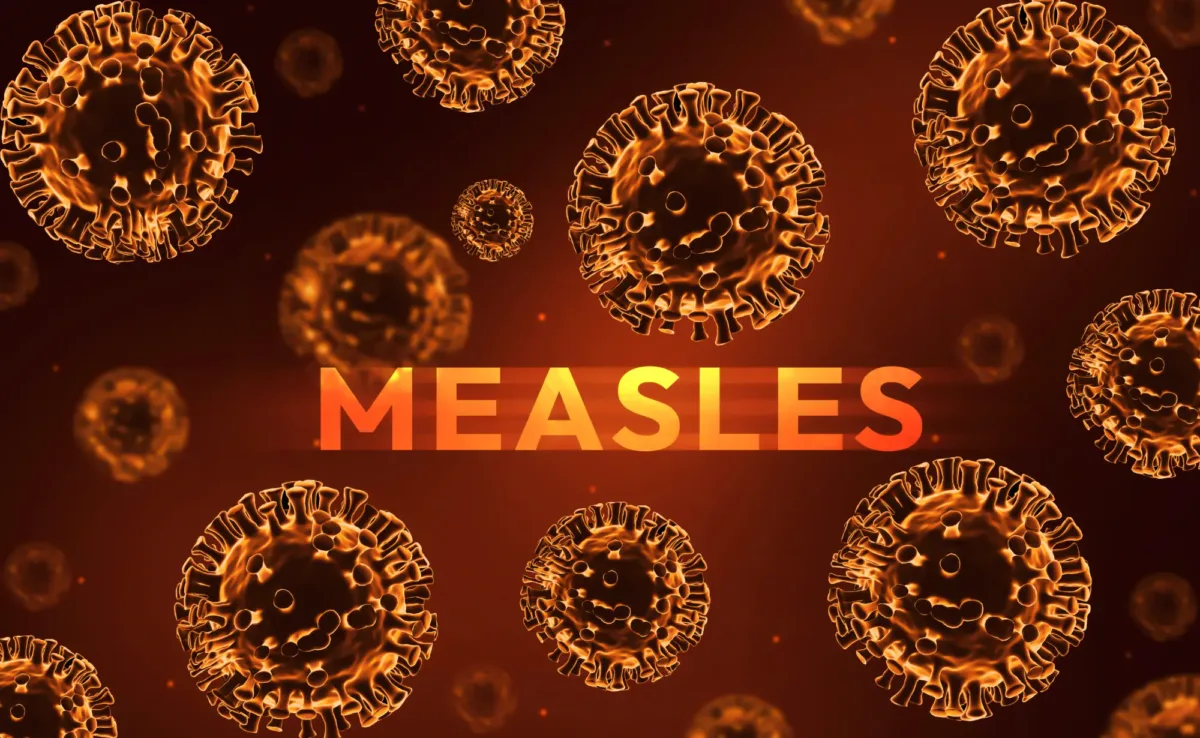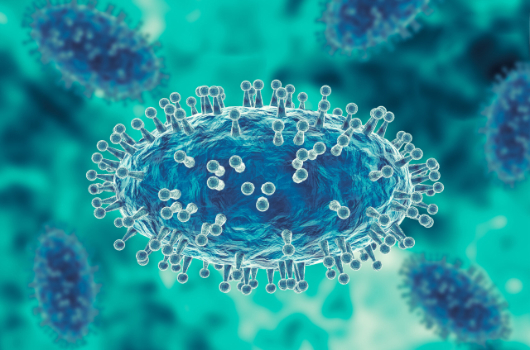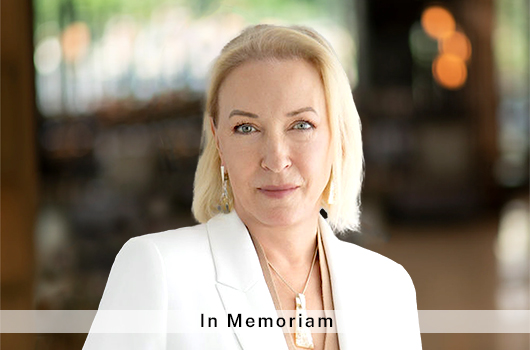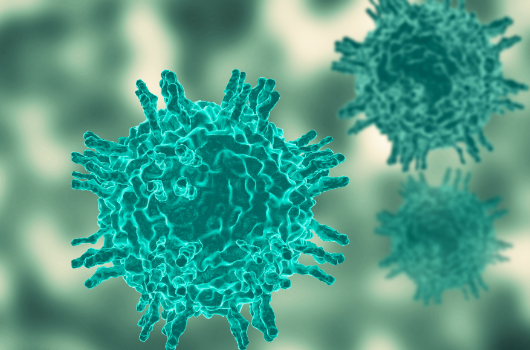Clinical Study
Why Measles Is Spreading Again—And What It Means for Global Health

Dr. Pallavi Upadhyay • May 1, 2025
Originally published in: Today’s Clinical Lab
Measles is resurging in 2025 as falling vaccination rates and misinformation fuel a growing global health threat.
As measles cases rise in the US, particularly in Texas and its neighboring states, public health experts continue to remind the public that measles is a preventable disease. They emphasize the importance of continued surveillance, education for both patients and healthcare providers, prompt diagnostics, and preventive measures to help stop outbreaks.
This article provides an overview of measles and reviews its recent resurgence and the potential implications for clinical and diagnostic laboratories and public health systems.
What is measles? Key facts, symptoms, and transmission explained
Measles is a systemic viral disease caused by the measles virus, a highly contagious pathogen that spreads via respiratory route. Also known as morbillivirus (MeV) or rubeola virus, the measles virus is a single-stranded, enveloped RNA virus and is the most-studied virus of the genus Morbillivirus (subfamily Paramyxovirinae; family Paramyxoviridae).
Once the measles virus infects respiratory epithelial cells, it spreads systemically and can affect both lymphoid and non-lymphoid organs. Viral replication and systemic spread typically continue for about 9–14 days, a period known as the “asymptomatic phase.”
Clinical symptoms—typically including fever and rash—begin to appear 9–19 days after initial infection. This symptomatic phase is the result of the host’s MeV-specific immune response. Notably, this is also when infectious viral clearance occurs. As a systemic infection, measles can lead to complications across multiple organ systems. The severity of these complications is influenced by both internal and external factors such as immunosuppression, comorbidities, and patient age. In addition, by destroying epithelial barriers, measles increases people’s susceptibility to bacterial superinfections and secondary infections.
Pneumonia is the most common severe complication of measles and is responsible for the majority of measles-related deaths. Other secondary infections and complications include otitis, encephalitis, febrile seizures, appendicitis, diarrhea, conjunctivitis, and keratitis.
In more severe cases, measles can also lead to central nervous system diseases, triggering conditions such as acute disseminated encephalomyelitis and subacute sclerosing panencephalitis.
The history of measles immunization and eradication efforts
According to the World Health Organization (WHO), measles is one of the oldest and most contagious diseases known to humans. The earliest documented description of measles dates to 9th-century West Asia.
The global exploration of the 16th century facilitated the spread of measles virus to several parts of the world. Before the advent of vaccination, measles spread widely across the globe, remaining a deadly epidemic until the early 20th century.
The study in 1911 that deciphered the viral nature of measles, along with the isolation of measles viral cultures by Peebles and Enders—who were awarded the Nobel Prize in Medicine in 1954—paved the way for the development of the measles vaccine. The first measles vaccine was licensed in 1963. And the first combined vaccine against measles, mumps, and rubella (MMR) was released in 1971.
While the standalone measles vaccine is still available, the CDC recommends the MMR vaccine. Additionally, the quadrivalent MMRV vaccine, which includes measles, mumps, rubella, and varicella/chickenpox, can be administered to children between 12 months and 12 years of age.
Thanks to years of combined efforts from the CDC, WHO (especially the EPI program), and USAID, global measles vaccination efforts have led to a significant decline in measles cases. In fact, due to these effective vaccination strategies, measles was declared eradicated in the US in 2000. However, sporadic outbreaks continue to occur due to cases imported by travelers.
Why measles is resurging: Key factors driving current outbreaks
Despite the elimination of measles in several countries, measles immunization efforts began to face setbacks due to vaccine hesitancy. Publications such as the 1999 Lancet article that falsely linked the MMR vaccine to autism (a paper retracted in 2011), contributed to the rise of vaccine hesitancy and fueled public mistrust.
Vaccine apathy and the slowdown of immunization efforts have also contributed to the periodic resurgence of measles globally. A 2019 survey showed a 50 percent increase in measles cases worldwide compared to the years 2016–2018. And several countries lost their elimination status in 2019. A 2020 study demonstrated suboptimal MMR vaccine coverage as a key reason for re-emergence of measles in Europe. In the US, more than 1,200 measles cases were reported in 2019—the highest number since 1992. In addition, the disruption of routine healthcare services, including immunization campaigns, during the COVID-19 pandemic has further exacerbated the spread of measles.
As previously mentioned, measles is highly contagious. Its recent resurgence in unvaccinated populations and areas with declining vaccination rates has facilitated rapid viral transmission, often leading to outbreaks, particularly among people with low immunity.
In February 2024, the WHO predicted that more than 50 percent of countries worldwide could expect significant measles outbreaks in 2024. That same year, the US reported 285 measles cases. This year, the US had already surpassed that number by April 3.
As of April 25, 2025, the US has reported 884 measles cases—more than double the previous year’s total. Notably, more than 95 percent of the cases reported in 2025 have occurred in unvaccinated individuals or those with unknown vaccination status. Given the highly virulent and contagious nature of measles and the continued decline of vaccination rates, experts predict that the outbreak will continue to rise in the US.
Combating the measles outbreaks: Control and prevention strategies
Diagnostic and immunization approaches are crucial for addressing the challenges and barriers to achieving measles control and eventual eradication.
Practitioners rely on a combination of clinical evaluation and laboratory diagnostic tools to identify measles. Since the clinical symptoms of measles overlap with several other diseases (e.g., chickenpox, roseola, and rubella), accurate identification of measles is critical for effective measles control.
Laboratory-based confirmatory testing is essential.
Real-time RT-PCR, due to its high sensitivity and specificity, is the recommended method for diagnosing measles from clinical samples. In addition, rapid tests, such as serology tests and antigen tests, are also used for disease diagnosis and surveillance.
Measles is a highly infectious yet vaccine-preventable disease. To combat its resurgence and prevent it from making a comeback, as well as to maintain “herd immunity” and eradication status, several strategies are recommended:
- Strengthen vaccination programs and campaigns that emphasize the safety and efficacy of vaccines.
- Ensure vaccines are accessible and available to all, especially in resource-limited countries and communities where vaccine shipment and storage are still a challenge.
- Enhance public health and primary care initiatives to raise awareness about measles risks and preventive measures, making these initiatives more accessible to the public.
- Implement timely measles diagnostic approaches to quickly identify and curtail the spread of the disease.
- Adopt collaborative approaches with national and international health agencies, as well as private/commercial diagnostic labs, to improve immunization efforts and enhance outbreak preparedness and surveillance.
Strengthening efforts for measles control and eradication
While significant progress has been made in measles control through vaccination efforts, recent resurgences highlight the ongoing challenges in maintaining global immunity. Strengthening vaccination programs, improving access to vaccines, and enhancing diagnostic and public health strategies are essential to prevent further outbreaks. With continued commitment and collaboration, measles eradication remains within reach, but vigilance is key to protecting future generations from this preventable disease.
Related Articles and White papers

Dr. Pallavi Upadhyay • May 1, 2025
Originally published in: Today’s Clinical Lab
Measles is resurging in 2025 as falling vaccination rates and misinformation fuel a growing global health threat.
As measles cases rise in the US, particularly in Texas and its neighboring states, public health experts continue to remind the public that measles is a preventable disease. They emphasize the importance of continued surveillance, education for both patients and healthcare providers, prompt diagnostics, and preventive measures to help stop outbreaks.
This article provides an overview of measles and reviews its recent resurgence and the potential implications for clinical and diagnostic laboratories and public health systems.
What is measles? Key facts, symptoms, and transmission explained
Measles is a systemic viral disease caused by the measles virus, a highly contagious pathogen that spreads via respiratory route. Also known as morbillivirus (MeV) or rubeola virus, the measles virus is a single-stranded, enveloped RNA virus and is the most-studied virus of the genus Morbillivirus (subfamily Paramyxovirinae; family Paramyxoviridae).
Once the measles virus infects respiratory epithelial cells, it spreads systemically and can affect both lymphoid and non-lymphoid organs. Viral replication and systemic spread typically continue for about 9–14 days, a period known as the “asymptomatic phase.”
Clinical symptoms—typically including fever and rash—begin to appear 9–19 days after initial infection. This symptomatic phase is the result of the host’s MeV-specific immune response. Notably, this is also when infectious viral clearance occurs. As a systemic infection, measles can lead to complications across multiple organ systems. The severity of these complications is influenced by both internal and external factors such as immunosuppression, comorbidities, and patient age. In addition, by destroying epithelial barriers, measles increases people’s susceptibility to bacterial superinfections and secondary infections.
Pneumonia is the most common severe complication of measles and is responsible for the majority of measles-related deaths. Other secondary infections and complications include otitis, encephalitis, febrile seizures, appendicitis, diarrhea, conjunctivitis, and keratitis.
In more severe cases, measles can also lead to central nervous system diseases, triggering conditions such as acute disseminated encephalomyelitis and subacute sclerosing panencephalitis.
The history of measles immunization and eradication efforts
According to the World Health Organization (WHO), measles is one of the oldest and most contagious diseases known to humans. The earliest documented description of measles dates to 9th-century West Asia.
The global exploration of the 16th century facilitated the spread of measles virus to several parts of the world. Before the advent of vaccination, measles spread widely across the globe, remaining a deadly epidemic until the early 20th century.
The study in 1911 that deciphered the viral nature of measles, along with the isolation of measles viral cultures by Peebles and Enders—who were awarded the Nobel Prize in Medicine in 1954—paved the way for the development of the measles vaccine. The first measles vaccine was licensed in 1963. And the first combined vaccine against measles, mumps, and rubella (MMR) was released in 1971.
While the standalone measles vaccine is still available, the CDC recommends the MMR vaccine. Additionally, the quadrivalent MMRV vaccine, which includes measles, mumps, rubella, and varicella/chickenpox, can be administered to children between 12 months and 12 years of age.
Thanks to years of combined efforts from the CDC, WHO (especially the EPI program), and USAID, global measles vaccination efforts have led to a significant decline in measles cases. In fact, due to these effective vaccination strategies, measles was declared eradicated in the US in 2000. However, sporadic outbreaks continue to occur due to cases imported by travelers.
Why measles is resurging: Key factors driving current outbreaks
Despite the elimination of measles in several countries, measles immunization efforts began to face setbacks due to vaccine hesitancy. Publications such as the 1999 Lancet article that falsely linked the MMR vaccine to autism (a paper retracted in 2011), contributed to the rise of vaccine hesitancy and fueled public mistrust.
Vaccine apathy and the slowdown of immunization efforts have also contributed to the periodic resurgence of measles globally. A 2019 survey showed a 50 percent increase in measles cases worldwide compared to the years 2016–2018. And several countries lost their elimination status in 2019. A 2020 study demonstrated suboptimal MMR vaccine coverage as a key reason for re-emergence of measles in Europe. In the US, more than 1,200 measles cases were reported in 2019—the highest number since 1992. In addition, the disruption of routine healthcare services, including immunization campaigns, during the COVID-19 pandemic has further exacerbated the spread of measles.
As previously mentioned, measles is highly contagious. Its recent resurgence in unvaccinated populations and areas with declining vaccination rates has facilitated rapid viral transmission, often leading to outbreaks, particularly among people with low immunity.
In February 2024, the WHO predicted that more than 50 percent of countries worldwide could expect significant measles outbreaks in 2024. That same year, the US reported 285 measles cases. This year, the US had already surpassed that number by April 3.
As of April 25, 2025, the US has reported 884 measles cases—more than double the previous year’s total. Notably, more than 95 percent of the cases reported in 2025 have occurred in unvaccinated individuals or those with unknown vaccination status. Given the highly virulent and contagious nature of measles and the continued decline of vaccination rates, experts predict that the outbreak will continue to rise in the US.
Combating the measles outbreaks: Control and prevention strategies
Diagnostic and immunization approaches are crucial for addressing the challenges and barriers to achieving measles control and eventual eradication.
Practitioners rely on a combination of clinical evaluation and laboratory diagnostic tools to identify measles. Since the clinical symptoms of measles overlap with several other diseases (e.g., chickenpox, roseola, and rubella), accurate identification of measles is critical for effective measles control.
Laboratory-based confirmatory testing is essential.
Real-time RT-PCR, due to its high sensitivity and specificity, is the recommended method for diagnosing measles from clinical samples. In addition, rapid tests, such as serology tests and antigen tests, are also used for disease diagnosis and surveillance.
Measles is a highly infectious yet vaccine-preventable disease. To combat its resurgence and prevent it from making a comeback, as well as to maintain “herd immunity” and eradication status, several strategies are recommended:
- Strengthen vaccination programs and campaigns that emphasize the safety and efficacy of vaccines.
- Ensure vaccines are accessible and available to all, especially in resource-limited countries and communities where vaccine shipment and storage are still a challenge.
- Enhance public health and primary care initiatives to raise awareness about measles risks and preventive measures, making these initiatives more accessible to the public.
- Implement timely measles diagnostic approaches to quickly identify and curtail the spread of the disease.
- Adopt collaborative approaches with national and international health agencies, as well as private/commercial diagnostic labs, to improve immunization efforts and enhance outbreak preparedness and surveillance.
Strengthening efforts for measles control and eradication
While significant progress has been made in measles control through vaccination efforts, recent resurgences highlight the ongoing challenges in maintaining global immunity. Strengthening vaccination programs, improving access to vaccines, and enhancing diagnostic and public health strategies are essential to prevent further outbreaks. With continued commitment and collaboration, measles eradication remains within reach, but vigilance is key to protecting future generations from this preventable disease.





